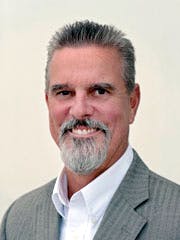The outlook for the commercial geothermal industry in 2014 is very positive. There’s a better appreciation than ever before of the technology, going all the way down the food chain from architects and HVAC design engineering firms to building owners and managers. From a marketing standpoint, geothermal is increasingly becoming better recognized as a viable alternative to traditional HVAC systems.
Add to that the fact that we’ve basically weathered the economic downturn and now can anticipate an upturn. We were starting to see an upswing in equipment sales in the third and fourth quarters of 2013, and that bodes well for 2014.
Commercial facilities and institutions such as schools, libraries, and public facilities remained a strong market for geothermal throughout the downturn. When there were no new homes being built, and the retrofit market had plateaued, our industry survived through commercial and institutional sales.
We know that a number of schools that have adopted our technology, both in new construction and retrofit. In Illinois, for example, we have nearly 100% of the school market. The interesting thing about the school market is that the administrators talk. When a school administrator sees another school district doing something that is economically beneficial, word gets out. We’ve seen that both in Illinois and nationally, where school administrators and school engineers see the benefit of geothermal heat pump technology.
On the commercial side we’re beginning to see corporations that have “cookie-cutter” stores, such as IKEA, Walgreens, and McDonald’s, adopt our technology. They then see firsthand the energy savings they can achieve from store to store with geothermal heat pump systems compared to conventional HVAC systems, and that makes them want to implement the technology even more widely. (For details on recent geothermal projects completed across the country, visit bit.ly/GeoCase).
When the business community starts seeing the value of a technology, it spreads pretty quickly. And there are a number of other forces at play that will continue to encourage corporations to look at geothermal, such as communities adopting energy efficiency goals and putting carbon reduction programs in place. Those forces also trigger the architectural design engineering companies to take a better look at our technology.
We see synergy between corporations asking for geothermal systems, and architectural and design engineers understanding how to deploy the technology. To that end, we’ve been sponsoring, with the American Groundwater Trust, one-day seminars for architects and engineers on geothermal heat pumps. Interest in and attendance at those events is steadily increasing. (For a full schedule, visit www.agwt.org/events.) It’s a real win for our industry when we can get the architectural and engineering design companies onboard and adopting our technology.
Geothermal heat pump technology is a perfect fit for the smart-grid and for demand-side management programs, and we’ve been working hard to get utility support. All new geothermal heat pumps today are fully variable. So you can tie our machines into the smart-grid network and offer a lower electrical rate and significant savings to a building owner just by “dialing back” the equipment. You can go from running the machine at 100% to running it at 90%, 80%, or 70% depending on the circumstances, and the tenants probably won’t even notice the difference. Building owners get huge savings, and the utility reduces the demand on its system.
We still face some challenges. The first cost of geothermal heat pump systems is higher than traditional systems. But when that first cost is factored into the life of the building, it’s not a big number — especially when building owners see the immediate benefits in the form of lower energy bills. Plus, there’s still a 10% federal tax credit (with no cap) for installing a geothermal heat pump system.
Another challenge we face is helping lenders appreciate the value of geothermal heat pump systems. It’s difficult to monetize the geothermal loop, as well as the energy being placed into and taken out of the ground via the loop. Those aren’t “tangible assets” to a lender. So we’re working on ways to assign value to the loop that would satisfy a lender’s desire to have recourse. It’s a tricky issue, and it’s one where I think third parties must play a role. For example, we may see a situation in which a third-party intermediary acts as an ESCO in terms of monetizing the Btus from a geothermal heat exchanger.
I recently wrote a blog titled, “Why Are We Still Combusting In Buildings?” I think that’s going to be a theme going forward. People are going to be asking, “What’s the most efficient and environmentally sound way to heat and cool my buildings?” And if you do a 20-year life cycle cost, geothermal heat pumps win every time. That’s why I think 2014 is shaping up as a very promising year for the commercial geothermal heat pump industry.
is president and CEO of the Geothermal Exchange Organization. He can be reached at 217/414-0341, or by email at [email protected].

